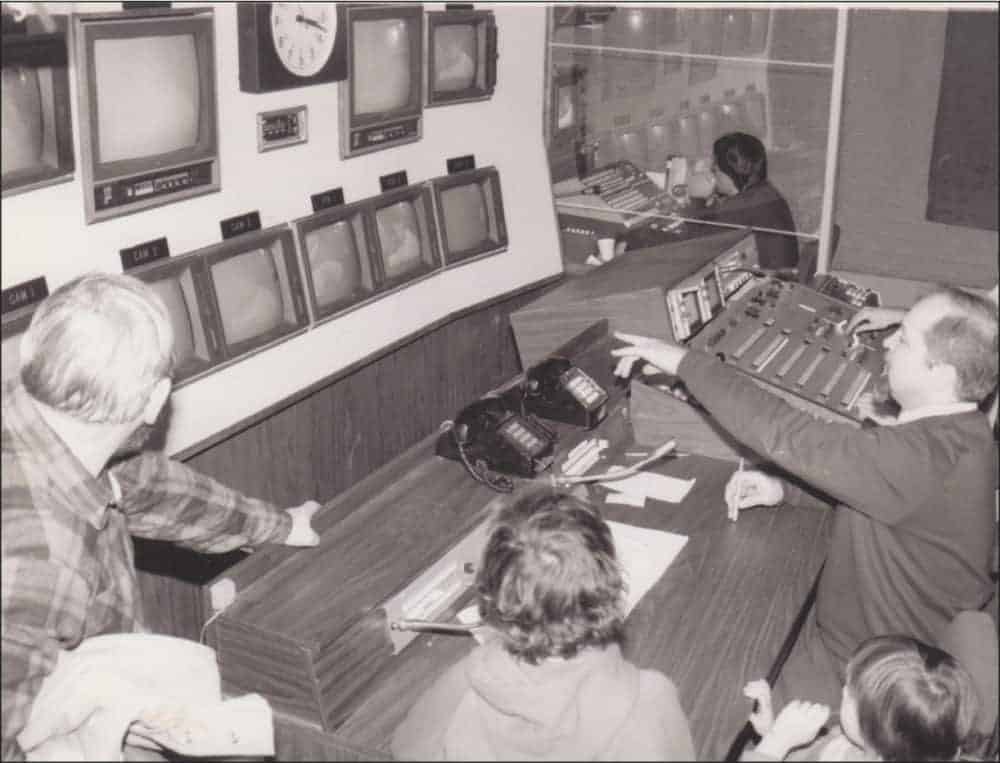
A scene from the CBC North television control room in Yellowknife in 1989.
A lot has changed at CBC North since it was formally set up in late 1968, but one key thing hasn’t: people still love their radio.
"Now, you know, a lot of our focus at CBC is on social media and digital media," said operations manager Kevin Woldum. "But our core audiences, especially in the smaller communities, are still listening to us on radio in the same way as they did when I started 38 years ago, and when CBC North started."
Woldum came to Yellowknife in 1985, and like many who arrive in the North, he fell in love with the place and stayed. As a technician, he travelled all around the North maintaining the equipment that sent CBC North’s radio and broadcast signals to homes and to people on the land.
"We broadcast to people on the land—people who are fishing, they get to hear the radio broadcast. They get to hear it daily and rely on it. Sometimes they get health and safety information from it."
One of the voices they’ve heard since 1983 is Leitha Kochon, from Fort Good Hope, who is now the host of the Le Got’She Deh radio show, which she delivers in North Slavey.
"A lot of the old trappers are retired and so the young people are taking over, but they’re still using the radio out on the land," she said.
Kochon remembers being part of stories big and small—from travelling around to attend building openings and community celebrations to covering major events like the creation of Nunavut and the Giant Mine bombing.
All along the way, it has been important to her that some of the voices discussing these events have been in the NWT’s Indigenous languages.
She remembers when the Dene Nation was pushing for one land claim for Dene people in the NWT, in the 1980s and early '90s, before communities split off. But now she sees communities like Deline getting self-government in place, with more agreements in the works.
"So many things are happening," she said.
Woldum said not only has the change in technology over the years been monumental, but the rate of change has increased exponentially. Equipment used to work for 10 or 15 years before becoming obsolete, but now technology changes after just a few years.
"The use of cellphones to gather video and to record audio probably has been about the biggest technological change in gathering material," said Woldum.
Looking forward, Kochon is excited about a project that’s especially close to her heart: making a trove of oral history available to anyone online sometime in the near future.
Given the high cost of travel in the North, Kochon said reporters try to gather as much as possible when visiting other communities—not just news, but traditional stories and more practical knowledge like instructions on how to make snowshoes.
"These stories are so valuable," she said. "So, I’m really glad we’re archiving our language and archiving all our stories and so that in the future people can still hear those stories right from the elders, and have the knowledge that they have."